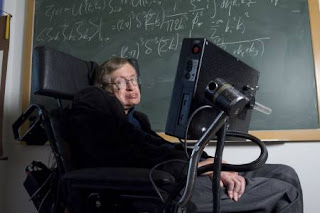 The story of the year is undoubtedly the fall of investment banking and governments rushing to inject tax payers money into what was left. But physicists had come to expect funding difficulties well before the financial crash in September. By December 2007, one of the UK's main funding councils, the Science and Technology Facilities Council (STFC), announced an £80m hole in its budget, whilst the US Congress dished out much less than President Bush requested for the 2008 financial year, forcing some national lab such as Fermilab to lay-off staff.
The story of the year is undoubtedly the fall of investment banking and governments rushing to inject tax payers money into what was left. But physicists had come to expect funding difficulties well before the financial crash in September. By December 2007, one of the UK's main funding councils, the Science and Technology Facilities Council (STFC), announced an £80m hole in its budget, whilst the US Congress dished out much less than President Bush requested for the 2008 financial year, forcing some national lab such as Fermilab to lay-off staff.The two stories continued throughout 2008, going through a few twists and turns, until a $186bn "supplemental bill" was passed by US congress in July containing an extra $338m for science. Meanwhile, the STFC, after consulting the community, produced a priority list for facilities, which largely meant that most of them would get some level of funding. And a review into the health of UK physics, chaired by Bill Wakeham, concluded that UK physics was in a "good state of health", but warned that "significant damage" had been done to the UK's international reputation following the STFC fracas.
The year also saw the birth of the Large Hadron Collider (LHC) at the CERN particle physics lab near Geneva. To media fanfare, the 27 Km collider circled its first protons all within a few hours of starting up on 10 September. Most of the public were probably wondering what merited round-the-clock coverage by the UK's BBC Radio 4, whilst the only black hole being produced was on Wall Street. The champagne corks were still popping, when nine days later, a magnet quench released some four tonnes of liquid helium when commissioning the proton beam at 5 TeV (the maximum energy is 7 TeV). Pictures released a few months later in December showed that magnets had been ripped from their floor connectors showing the force that was generated by the evaporating helium. It is now estimated the LHC will come online by June next year.
Early this year also saw a new family of superconductors, potentially saving the flagging field of high temperature superconductivity. These new iron-based materials superconduct at 26K, much lower then the record at 138K for a ceramic material composed of elements such as mercury, copper and oxygen (a family known as cuprates). The new materials, consisting of iron, lanthanum and oxygen, offer the promise of higher transition temperatures by easily manipulating the chemical substitution (much like the cuprates). But until now the highest has been 55K in a samarium-based compound.
The year ended with the US election and the following long wait for President-elect Obama to be inaugurated in January. His nomination of Nobel laureate Steven Chu for Secretary of the department of Energy is widely seen as showing Obama's green credentials. As is the choice of science advisor in physicist John Holdren who is professor of environmental policy at Harvard University. It will be interesting to see if Obama restores the science advisor as an "assistant to the President" position, which Bush denied to his science advisor John Marburger, as well as how Chu fares given his little political experience.
As for 2009? Well we have the restart of the LHC to look forward too, as well as wranglings over the US science budget for 2009, which has already been delayed until February -- so in the end not much change then.












